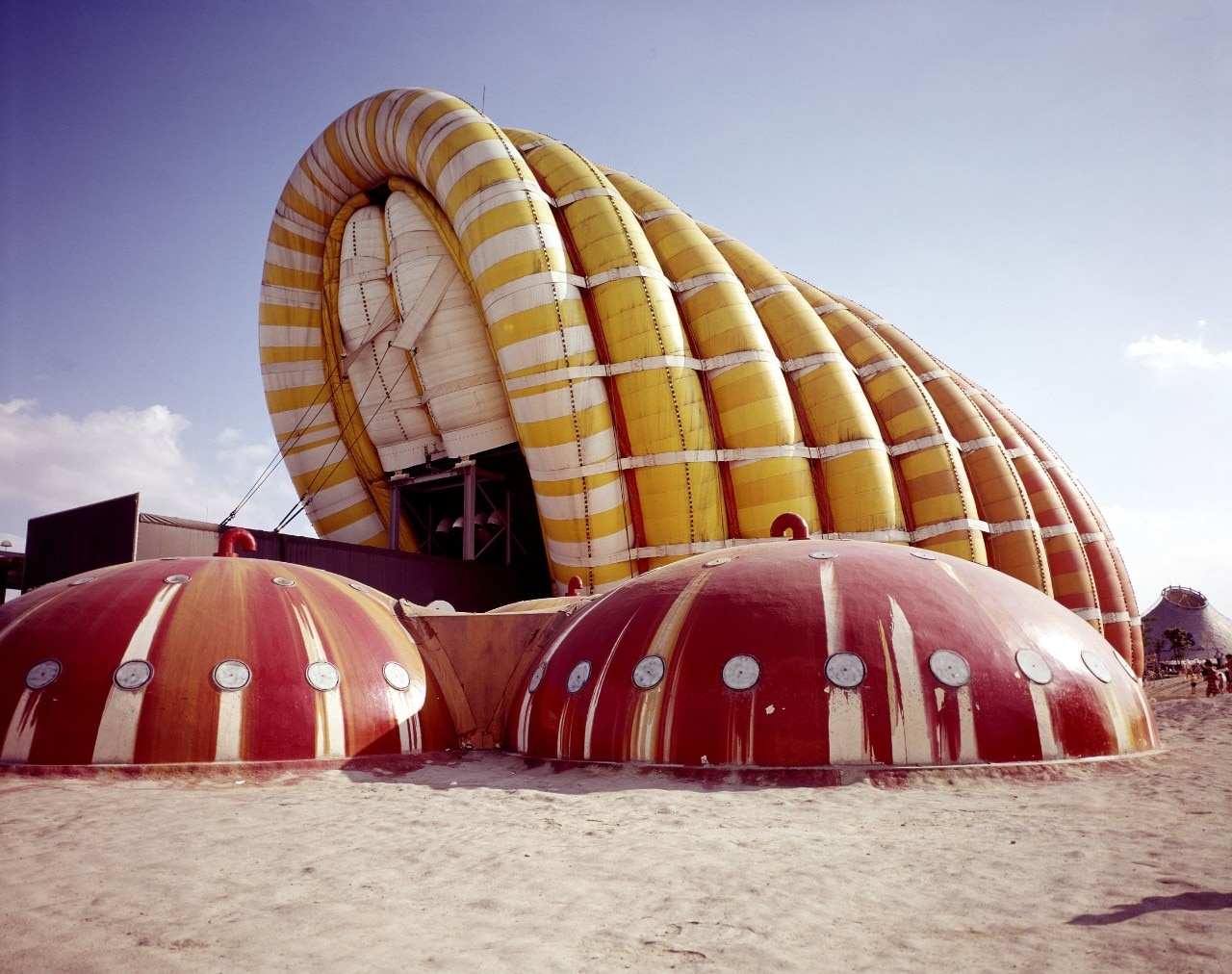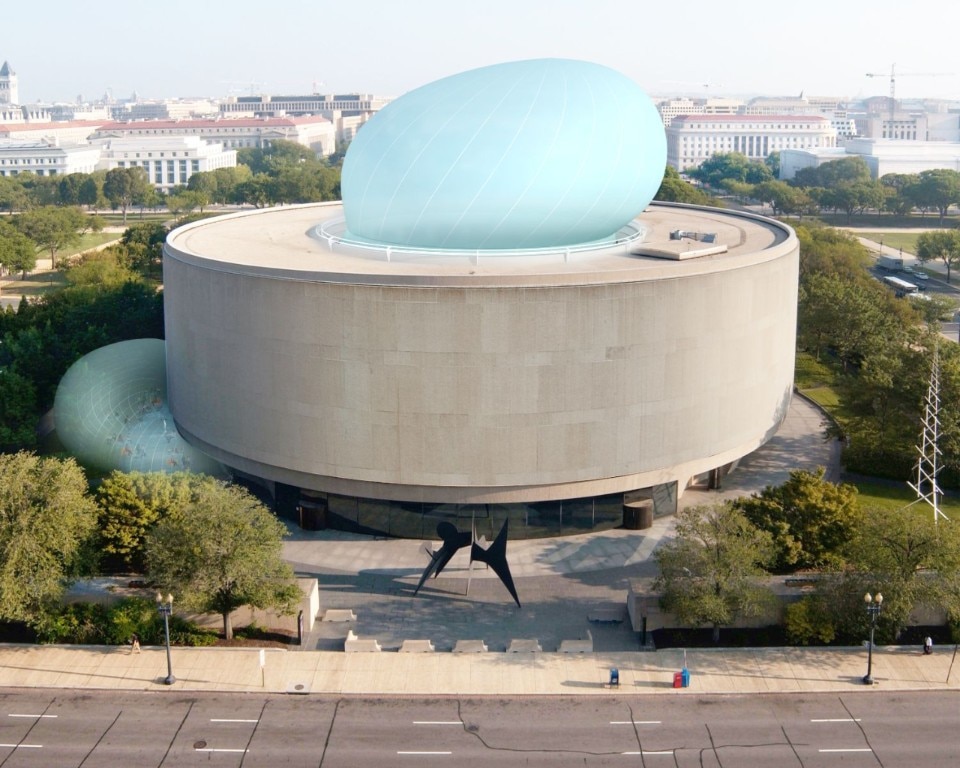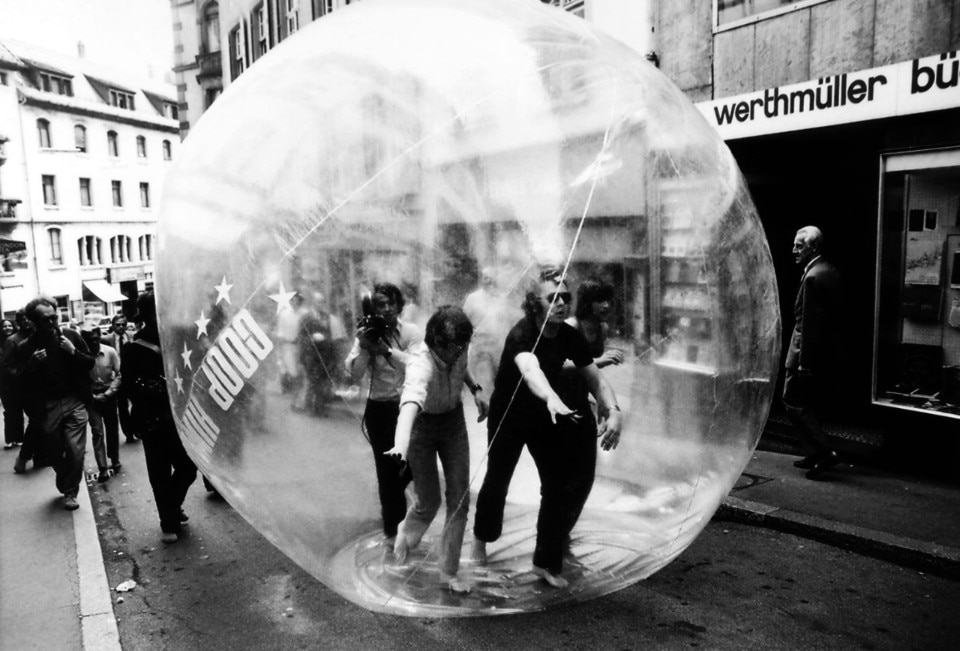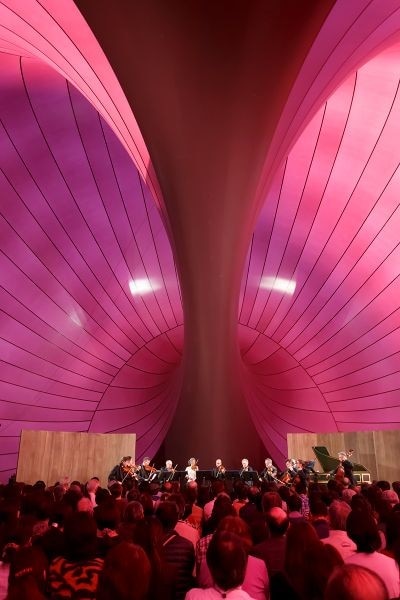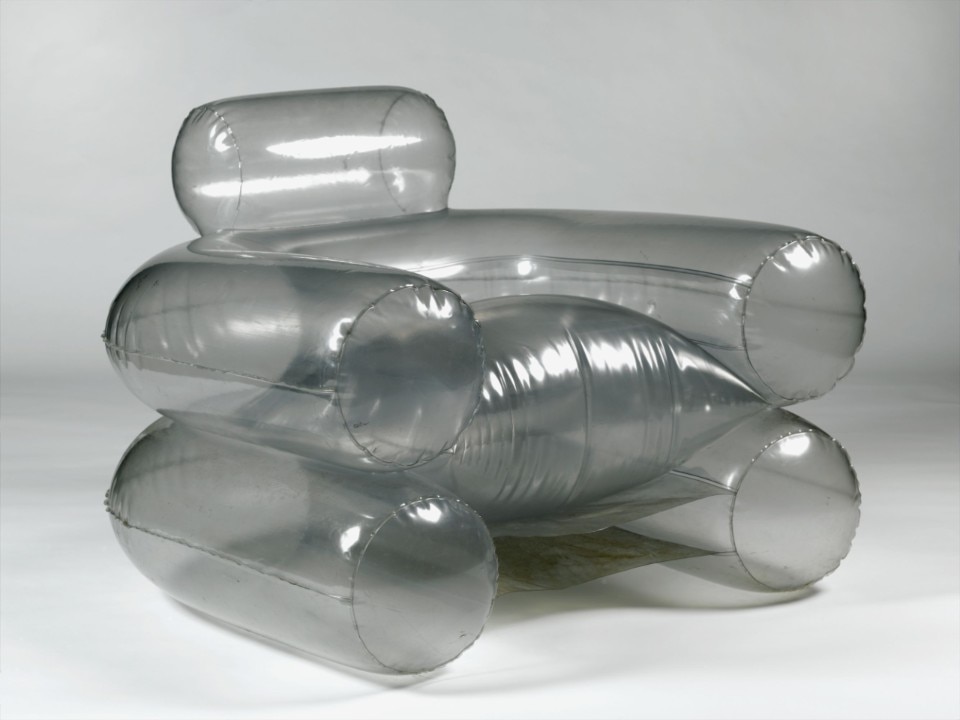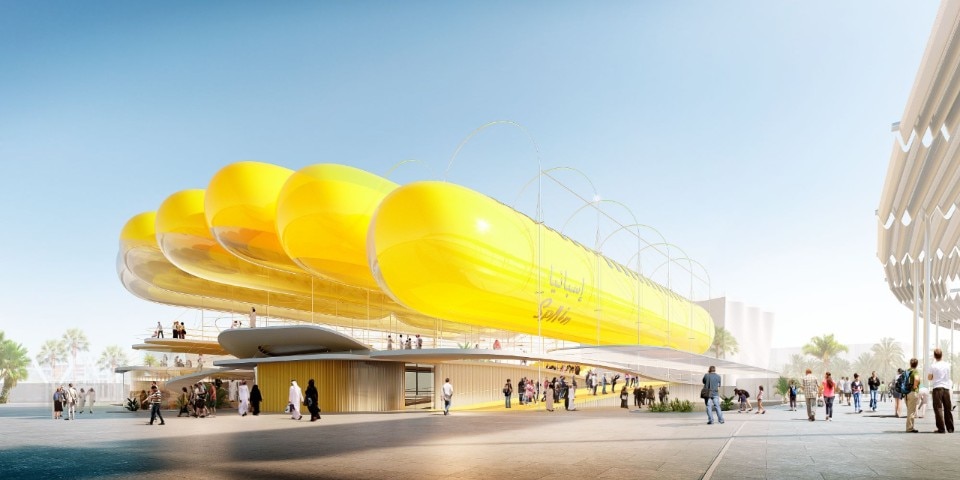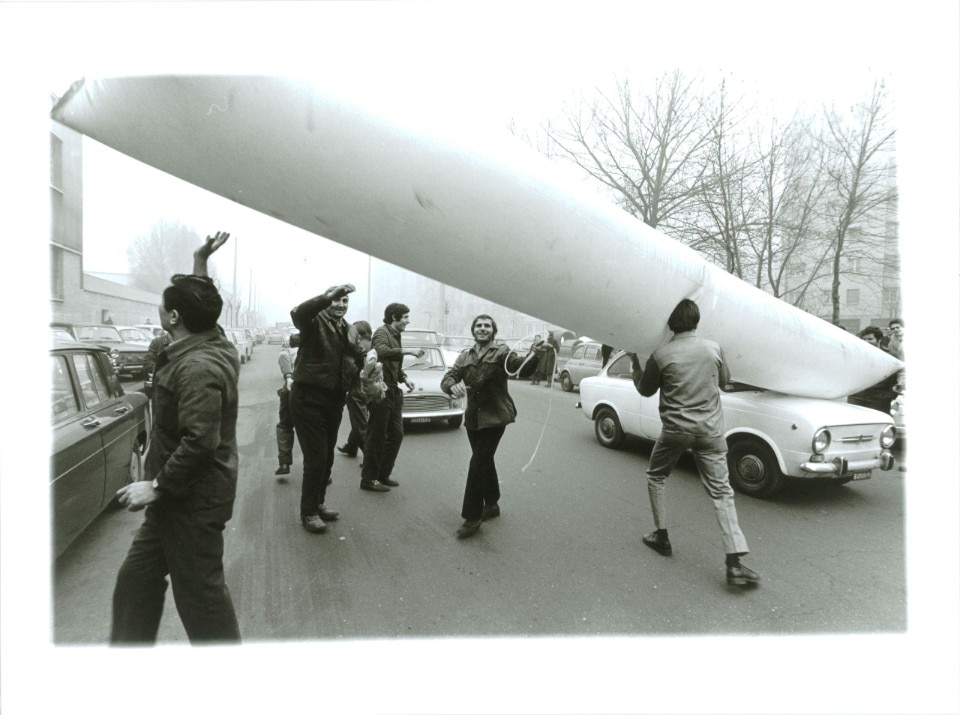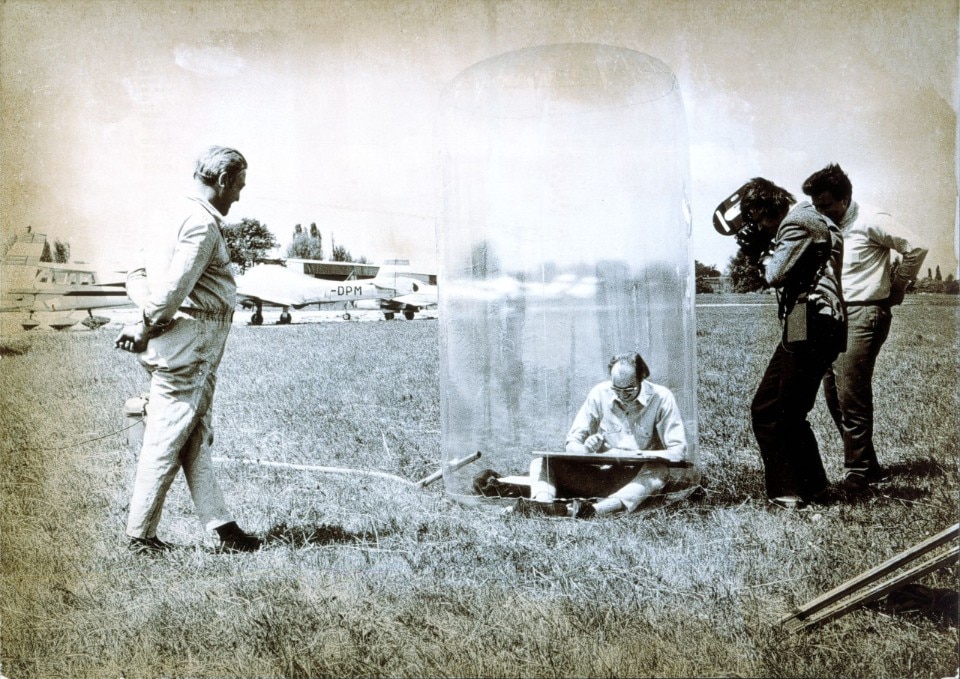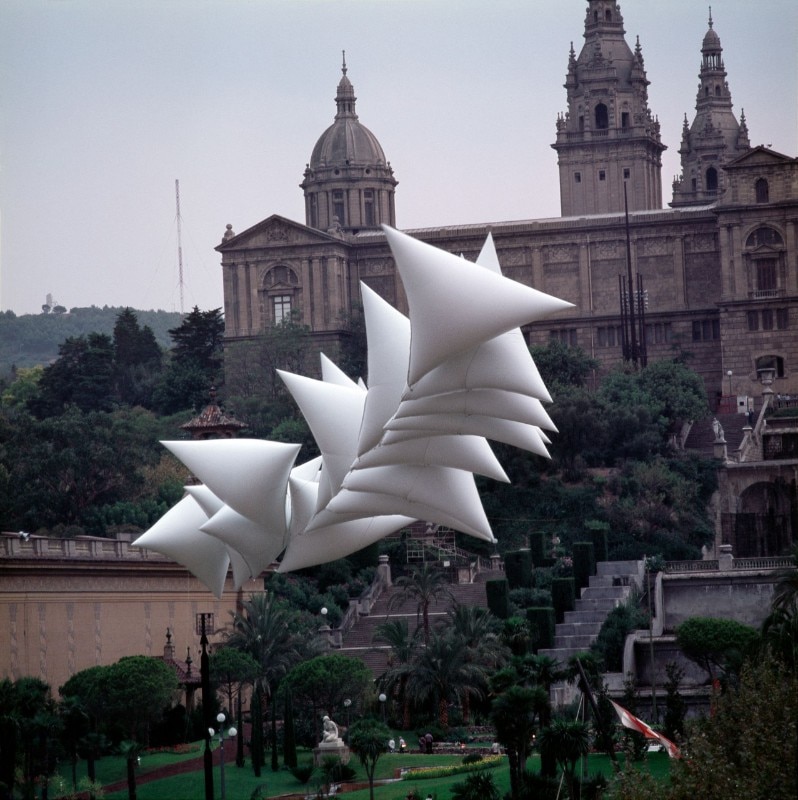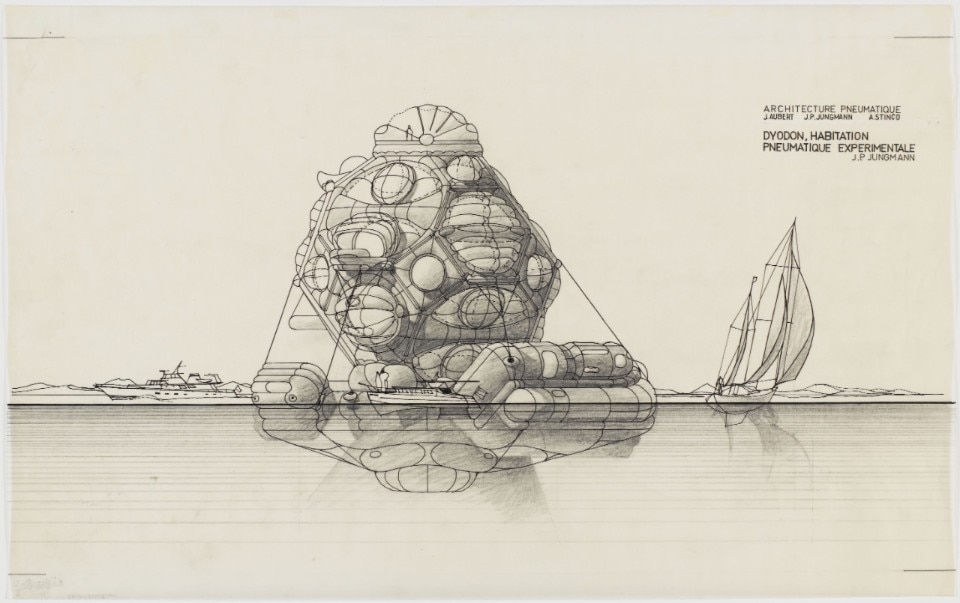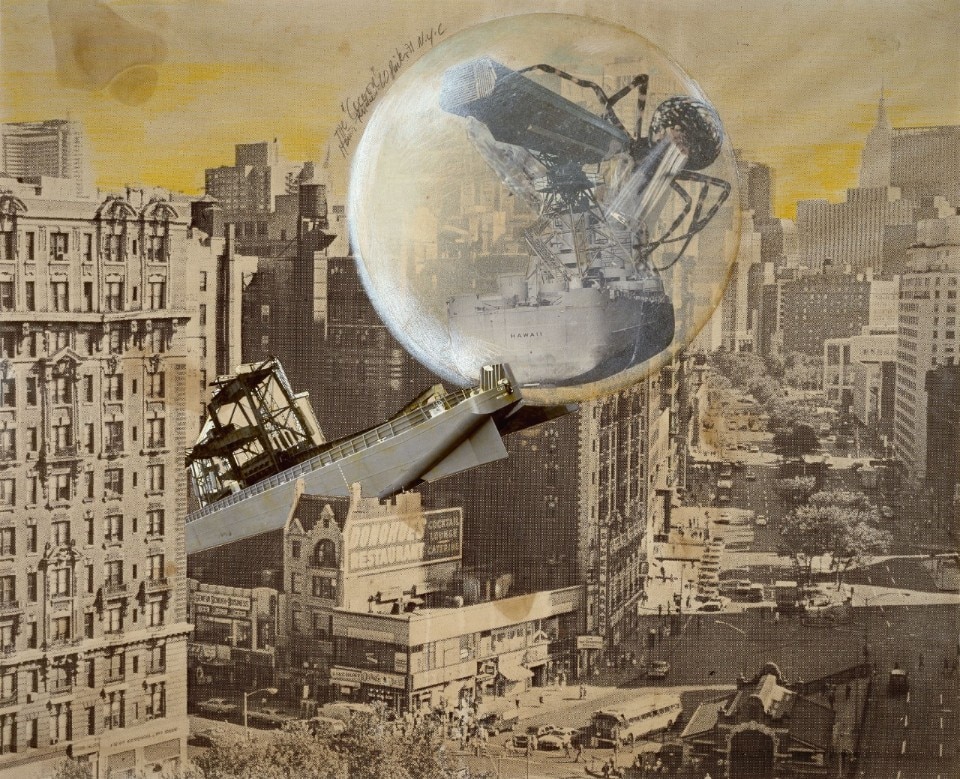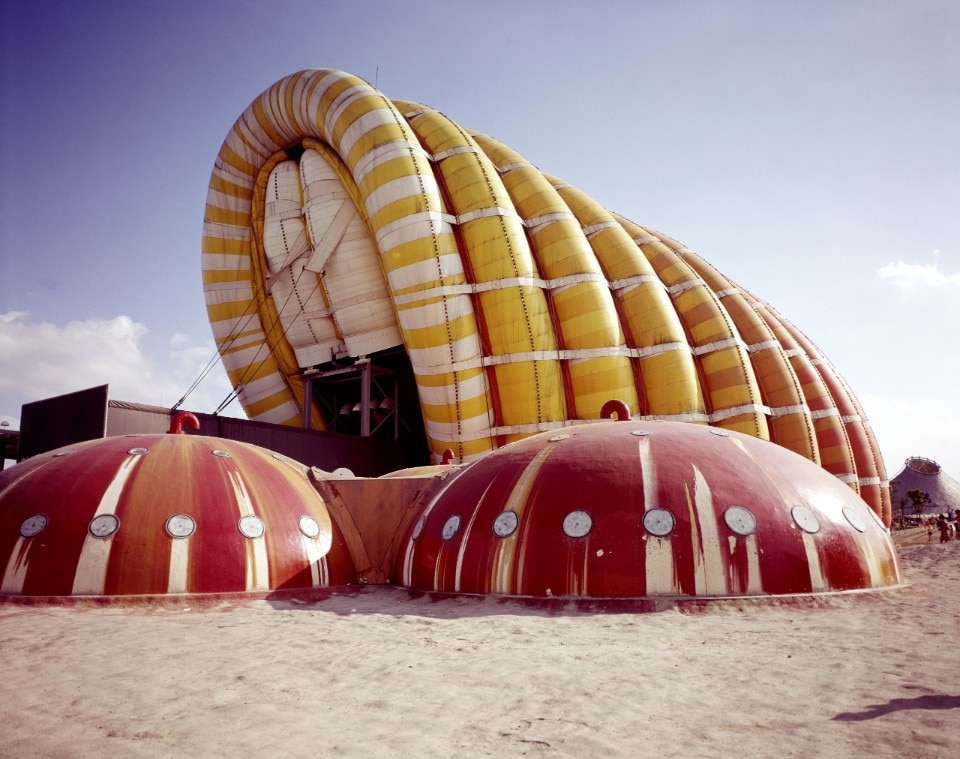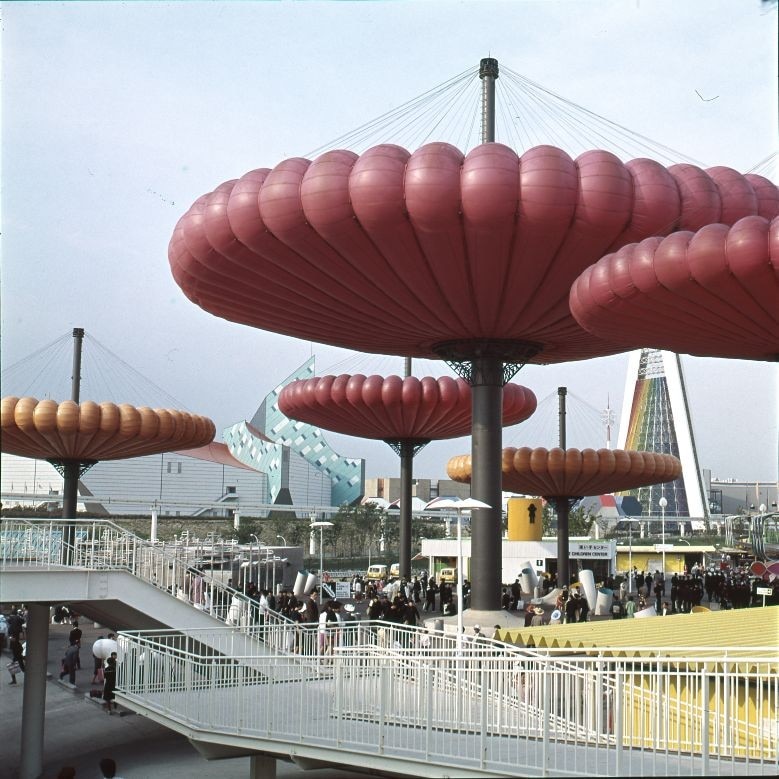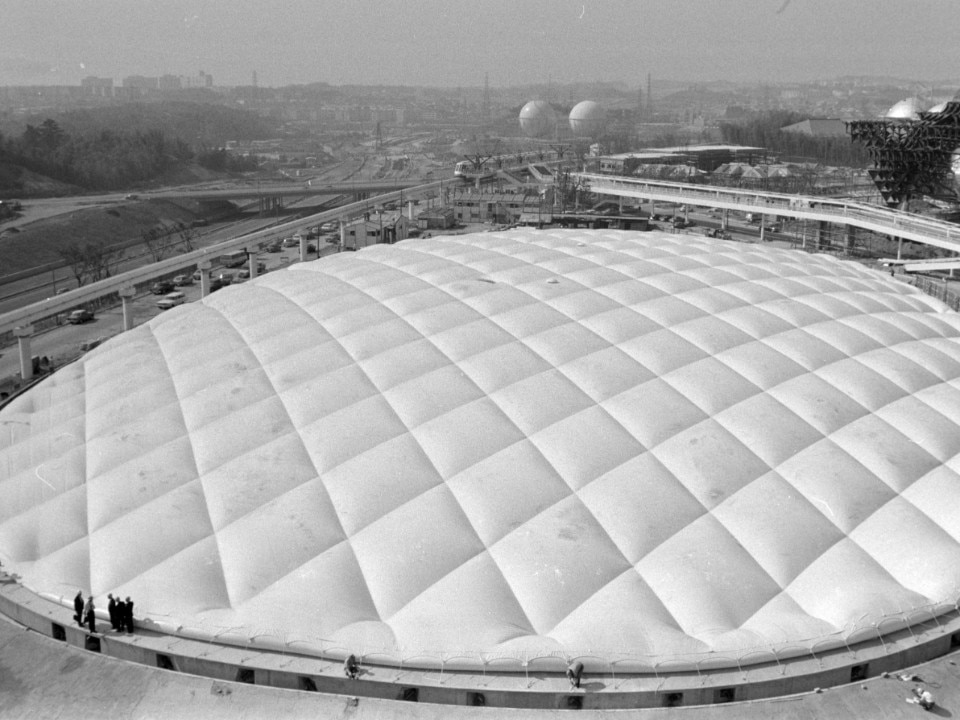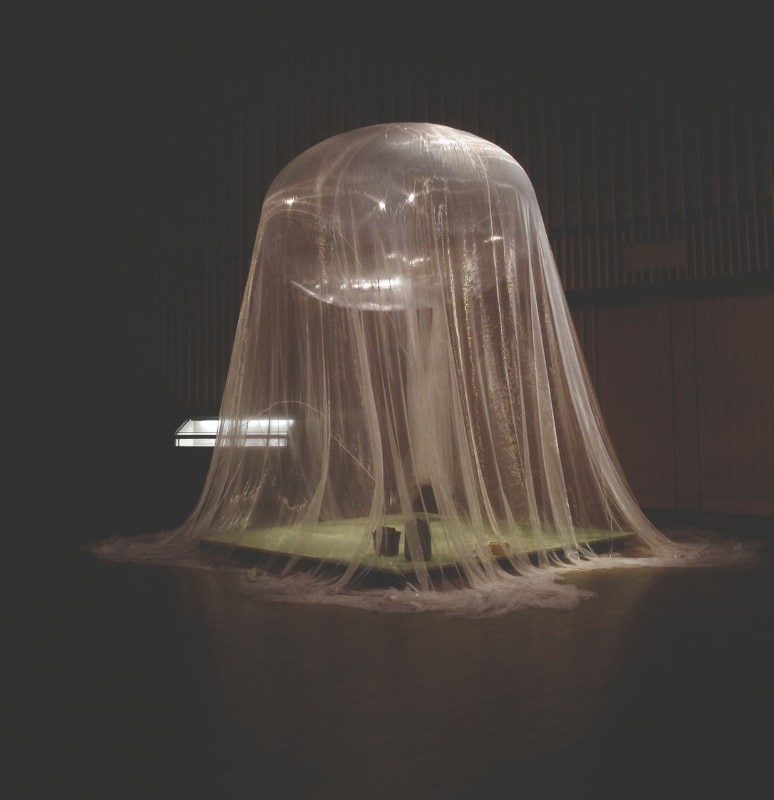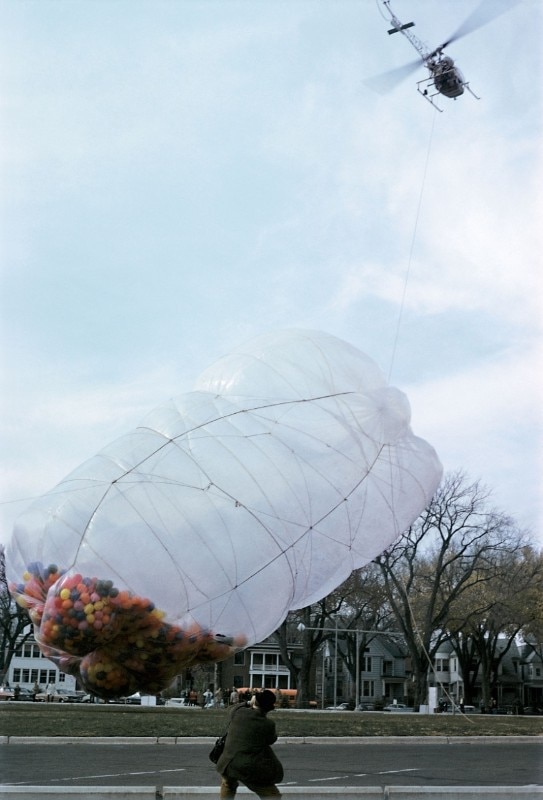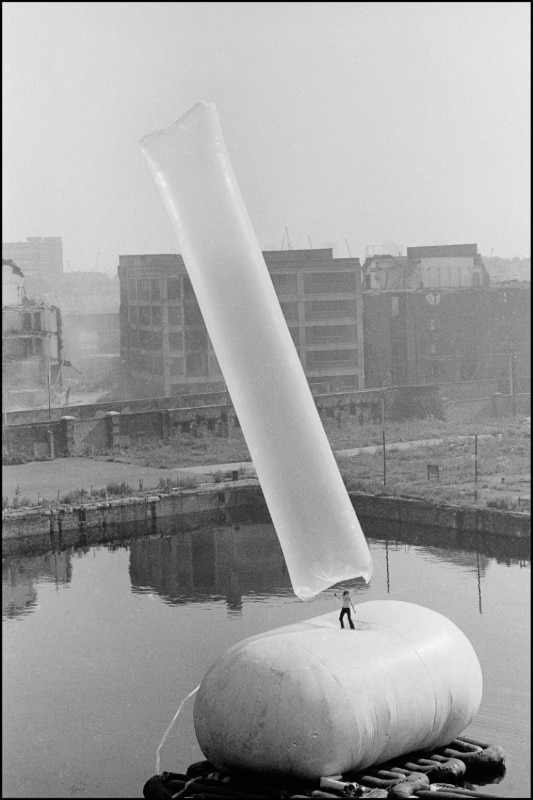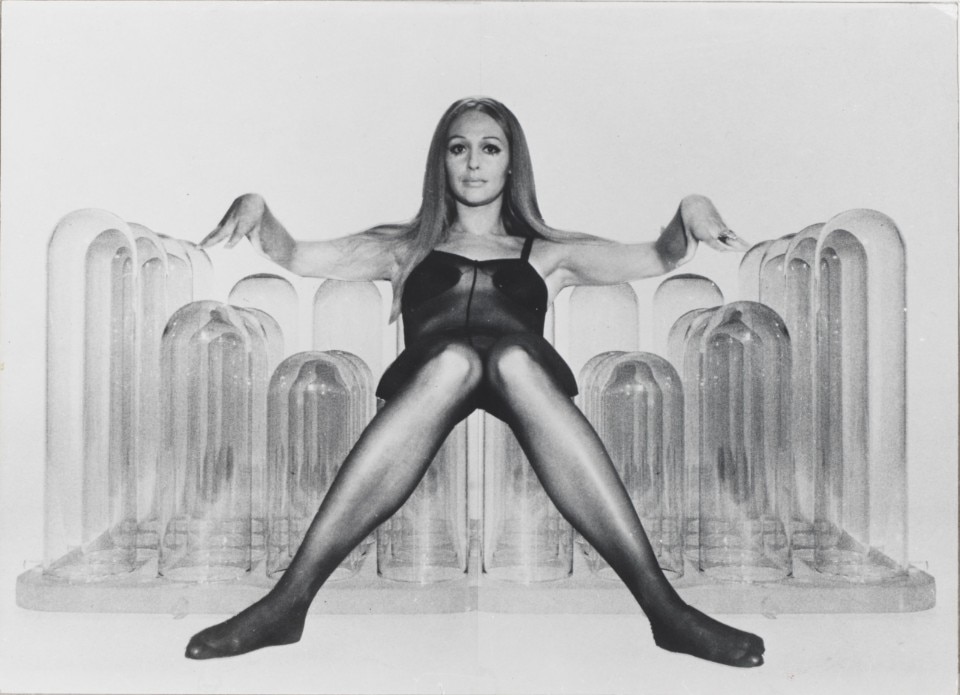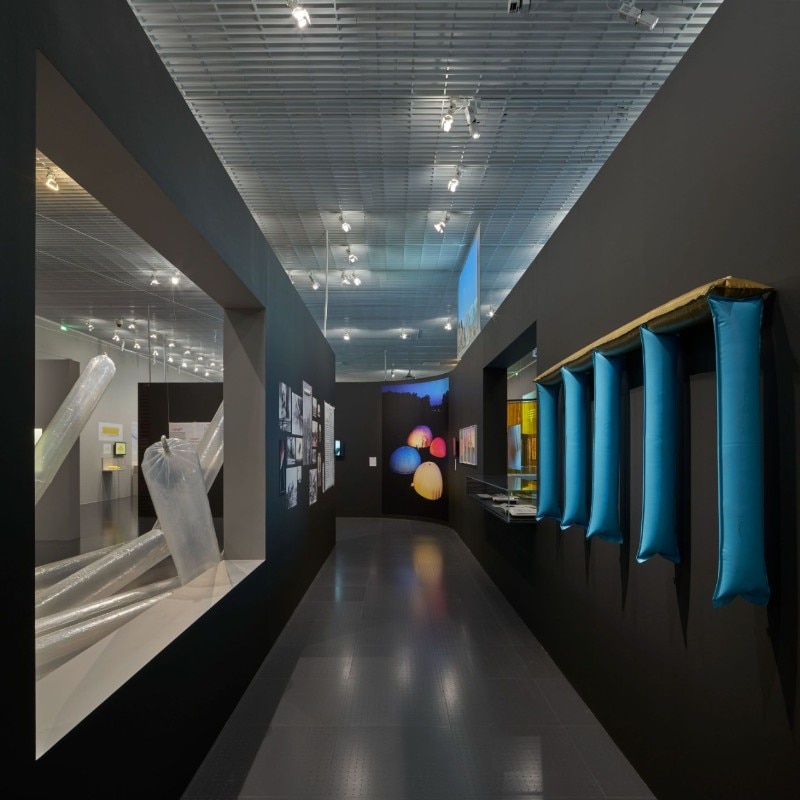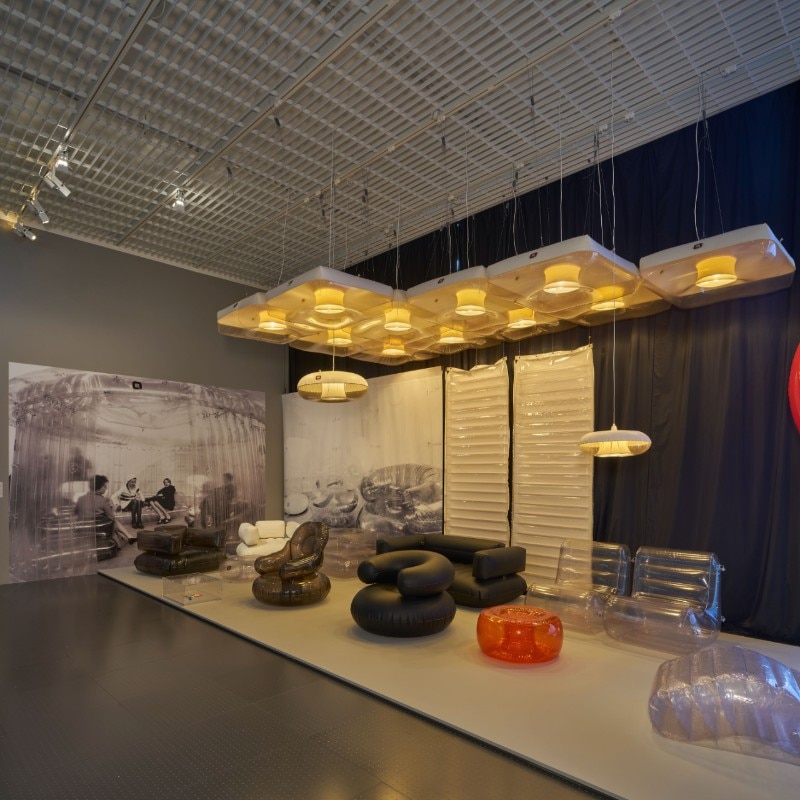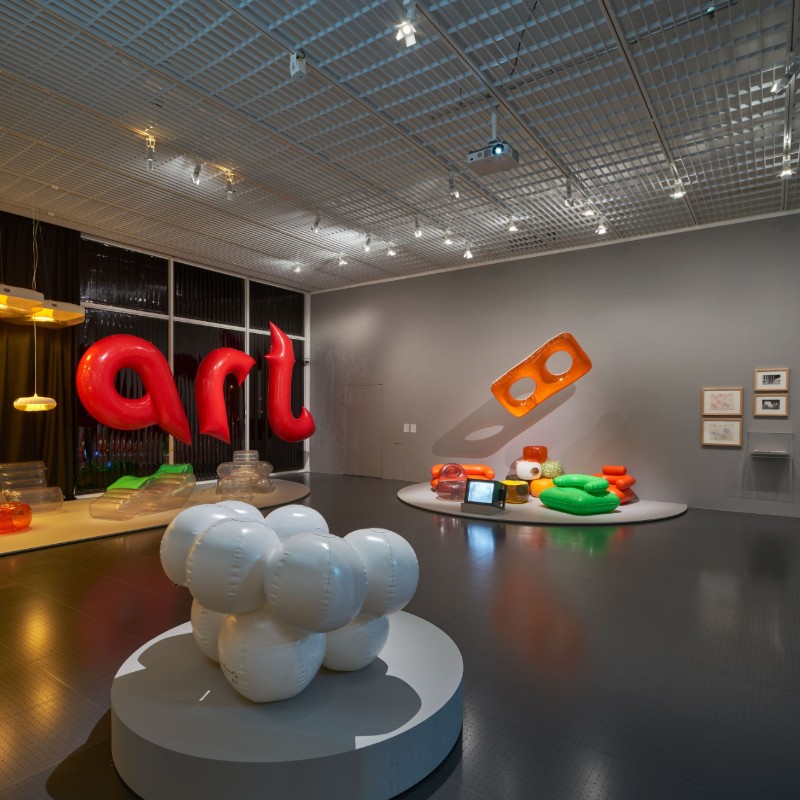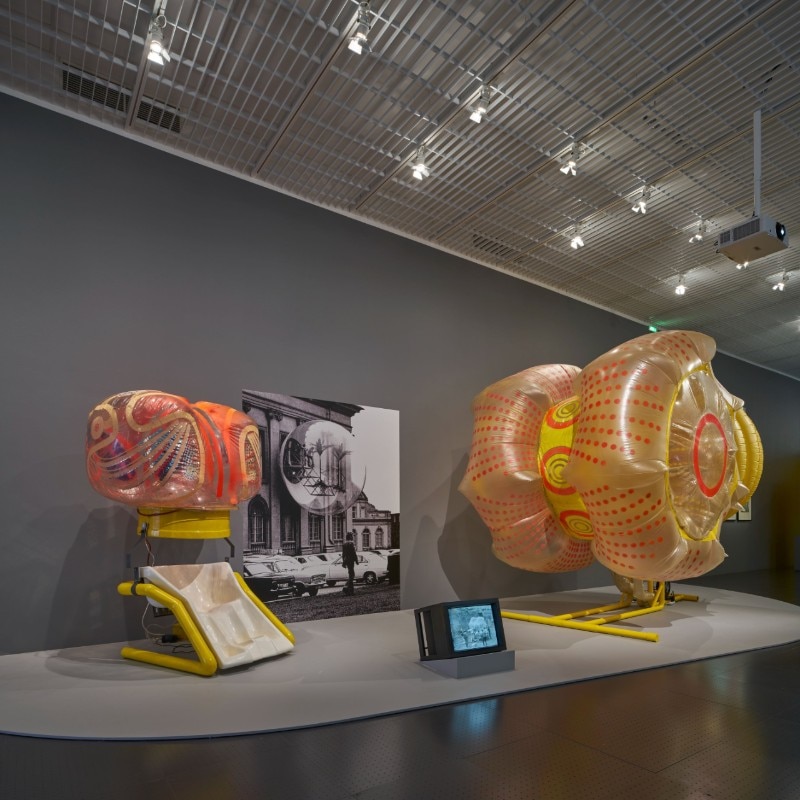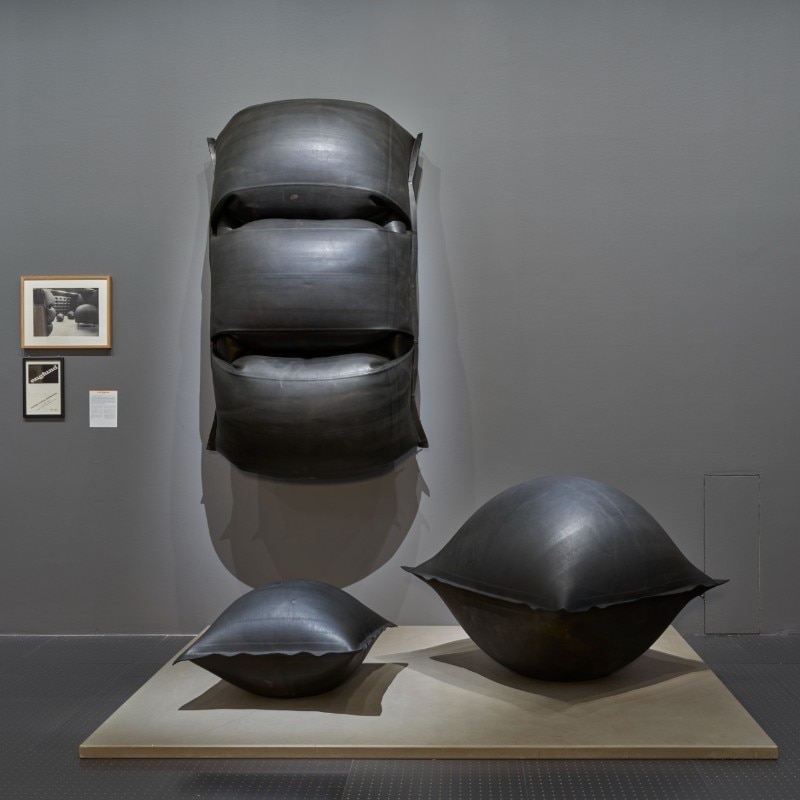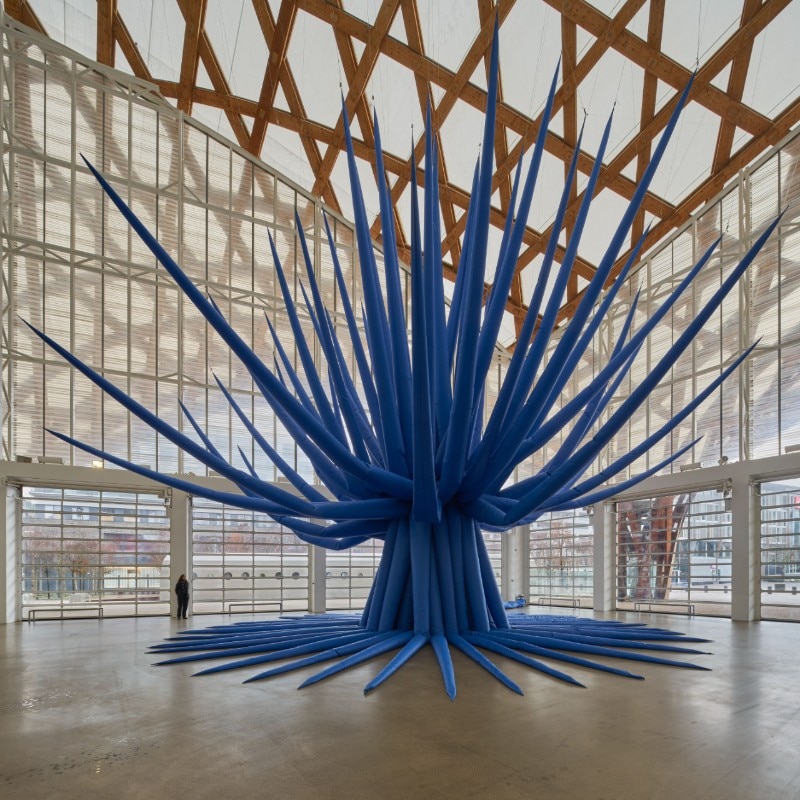Launched in January and running until August, the Centre Pompidou-Metz exhibition “Aerodream” showcases the spectacular history of inflatables touching upon art, architecture, and design. The exhibition (that will then move to the Cité de l’Architecture in Paris from October 6th 2021 to February 14th 2022) introduces a historical itinerary that, starting from the Second World War and leading to the present, investigates the unexpected political, critical and utopic functions of the balloons designed by artists and architects. We spoke to Frédéric Migayrou, head curator of Architecture and Design and deputy director of the Musée National d’Art Moderne – Centre Pompidou, as well as lecturer at the Bartlett School of Architecture, London, who curated the exhibition alongside Valentina Moimas.
The exhibition puts forward a material, plastic, but mostly an element, air. What is the story of the relationship between air and architecture?
Inflatable structures evoke the primal idea of the vital breath, but also of the flight. Despite the image of the air bubble allowing men to leave the Earth belongs to ancient iconography, it was only with the Montgolfier brothers in the XVIII century that it turned into reality. For this reason, the history of inflatables unfolded in parallel with that of aviation. However, when aerostats and zeppelins left room to mechanical aviation, it was space researches and the possibility for men to reach sideral spaces to capture the attention of architects and artist.
Even though the exhibition focuses on pneumatic architectures that, oddly enough, return to the ground and find a relationship with the land, the metaphor of the aerial dimension stays, at least in the form of an ideal tension.
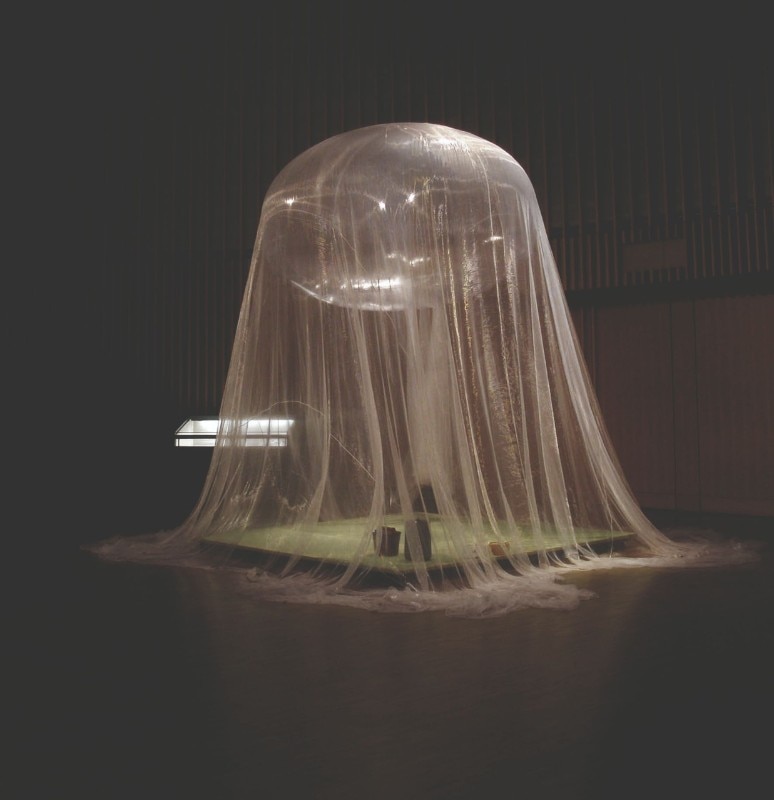
How was the architects’ interest towards this type of structure born?
It started as spatial research. Even if he didn’t design any inflatables, it was Lucio Fontana, with the notion of spatialism, to launch a new relationship with the atmosphere and with the infinite space as a field to explore. His influence can be traced in the works of Yves Klein, Piero Manzoni, of Gruppo Zero and Gruppo T, but also in the German artists Otto Piene and Hans Haacke who, after moving to the United States, produced several experiments with air balloons and other pneumatic structures. In the ‘60s, while the aerospace industry was developing, inflatables started to bing adopted in a plethora of fields – especially thanks to entrepreneur Walter Bird and the company Birdland, or to engineer Frei Otto. It was then that visionary English architects, like Archigram or Cedric Price, began to think of lightweight structures able to lift off the ground or to turn into shells for the body. Historically, art sets the pace, architecture follows.
The golden age of inflatables happened between the ‘60s and the ‘70s, with the radical and utopian schools in England, Austria, Japan and Italy. In that historical moment, characterised by political and social tensions, the architects incremented their experiments with pneumatic structures – where pneumatic bubbles were used to define an alternative life environment. Buckminster Fuller was among the firsts to conceive architectures with no foundations, but then with the advent of the hippy and radical movements, like AntFarm, inflatables became critical objects own of a climatised but unconditioned, subversive and free architecture: a non-utopia rather than a utopia.
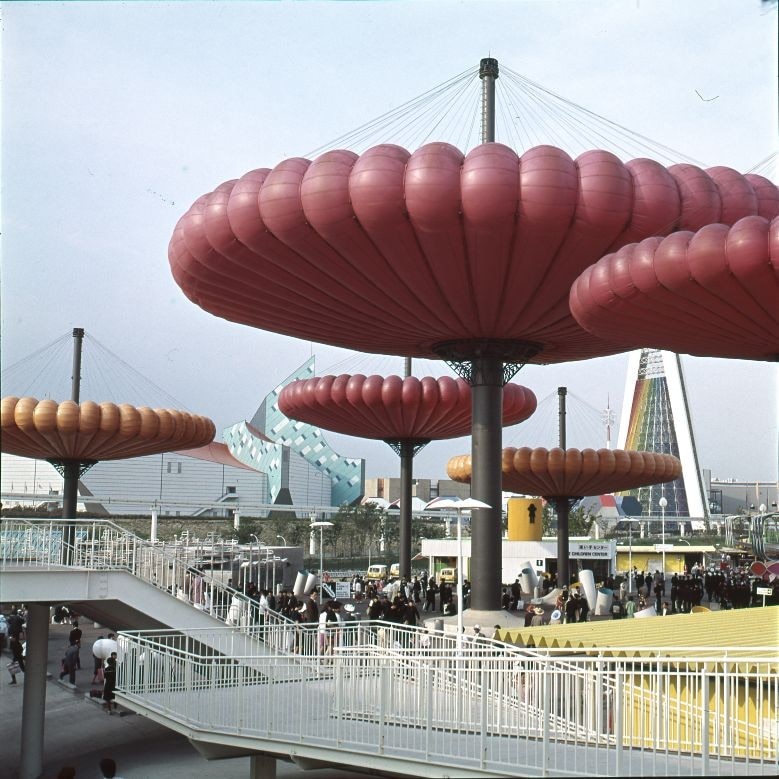
The central section of the exhibition nods to three historical exhibitions of that time. What is their relevance?
The exhibition “Structures Gonfiables” (“Inflatable Structures”) organised by the group Utopie in 1968 brough together, for the first time, a series of experiences involving art, architecture and critic and laid a claim to a critical position in contrast with the modernist tradition. In this politically engaged context, inflatables represented an easy, lightweight and aerial approach to production that clashed with the heaviness of the industrial materials, like concrete, employed in brutalism. The two editions of documenta in Kassel (1968, 1972) gave a great visibility to inflatables produced by artists – like Panamarenko, with his “Aeromodeller”, or Christo with his “5,600 Cubic Meter Package” – but also architects like the Austrian collective Haus-Rucker-Co who presented its famous bubble (“Oasis Nr.7”, 1972) popping out of a Fredericianum window. If for the artists those structures worked like non-objects, like conceptual devices fighting against the role of representation and materiality in the arts, to the eyes of the architects they represented spaces of emancipation from a production-oriented vision of society. Then, in conclusion, the Osaka Expo (1970) simultaneously represented the apex and the swan song of inflatables. Several countries explored innovative and visionary solutions, like the Americans with the EAT (Experiment in Art and Technology) project, or the Japanese with Taneo Oki and the Gutai group.
Historically, art sets the pace, architecture follows.
How are inflatables used critically?
In some cases, the use of inflatables answers to the needs of a specific project or of an ecological commitment, in others they become elements of political struggles – allowing to carry out interventions in public spaces – in Italy it is the case of Franco Mazzuccheli – an artist worthy of being rediscovered – and of radical group UFO with their Urboeffimeri actions. With them the inflatable structure allows to occupy the public ground, turning into a disruptive element, a foreign body invading the normalised territory of the city. At the same time, it introduces a playful, performative and ironical dimension. Mazzuchelli, for instance, adopting an approach typical of situationism and with political intentions, scatters structures in transparent polyether in the outskirts of Milan – also outside the gates of the Alfa Romeo factory (1970) – making them ‘accessible’ to the public who can therefore reinvent the use of the space; so that adults can be children again and the factory workers can play kings for a day.
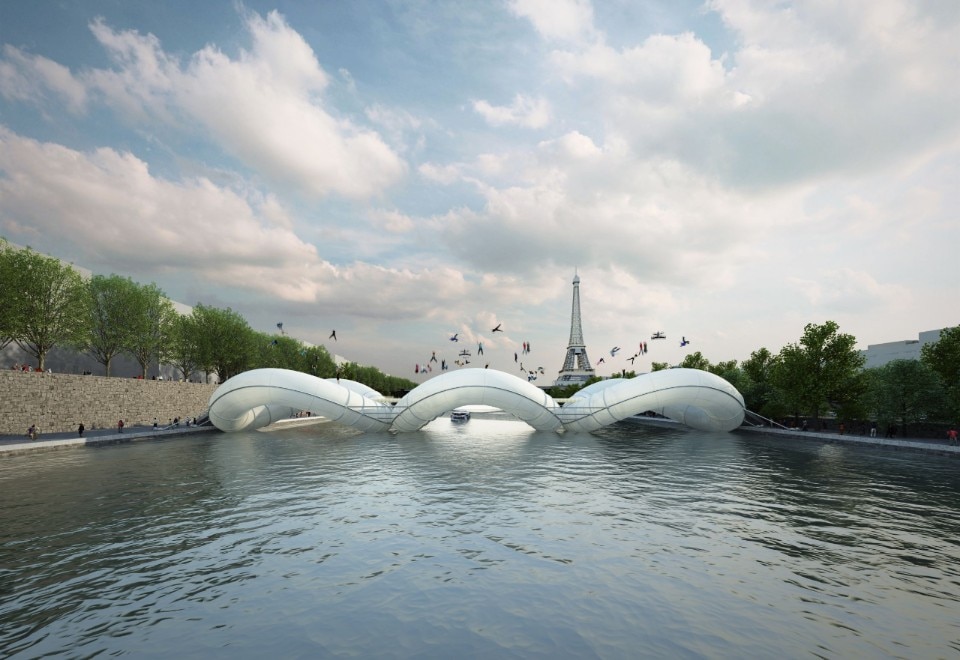
In the aftermath of the 1973 oil crisis, the plastic materials that had embodied the myth of the 1960s economic growth and of the space race were looked at with suspicion and the experimentations with inflatable structures seemed destined to end. However, over the last years, they have come back into fashion. What makes them relevant once again?
In all fairness, the critique to the consumerist society and the ecologic crisis draws a line from ephemeral structures and plastic materials. However, the odd objects that inflatables are have embodied, through the years, a fundamental stage of architecture history, laying the experimental foundations for the advent of post-modernism; a post-modernism that, though, lies within modernity and doesn’t surrender to historicism and relativism. On the contrary it creeps into modernity like a critical and radical dart, proposing alternative anthropological paths, both in its relation with the living spaces and with the urban dimension. The inflatable season has been a privileged moment of freedom. Inflatables actually never disappeared: in the ‘60s and the ‘70s plastic was all over the place. It wasn’t just a material but the symbol of the capitalism that celebrated nomadism and the ephemeral as luxury products – like showed with a biting sarcasm in Elio Petri’s film “The Tenth Victim” (1965). The moment inflatables entered domestic environments they abandoned the city.
In fact, now inflatables are on trend once again – with artists like Anish Kapoor and architects like Diller Scofidio et Renfro, Nicholas Grimshaw, Arata Isozaki, Herzog & de Meuron, Achim Menges, Kengo Kuma. They allow us to reinvent spatial possibilities, they introduce diverse cognitive and perceptive experiences: in this time of transition, the metaphor of the flight, the volatile and aerial dimension, the distance from the ground, more and more ill and consumed, emerge. The return of the inflatables points out the necessity to take off, that post-modernity is definitely coming to its end and that we are the dawn of a new era.


